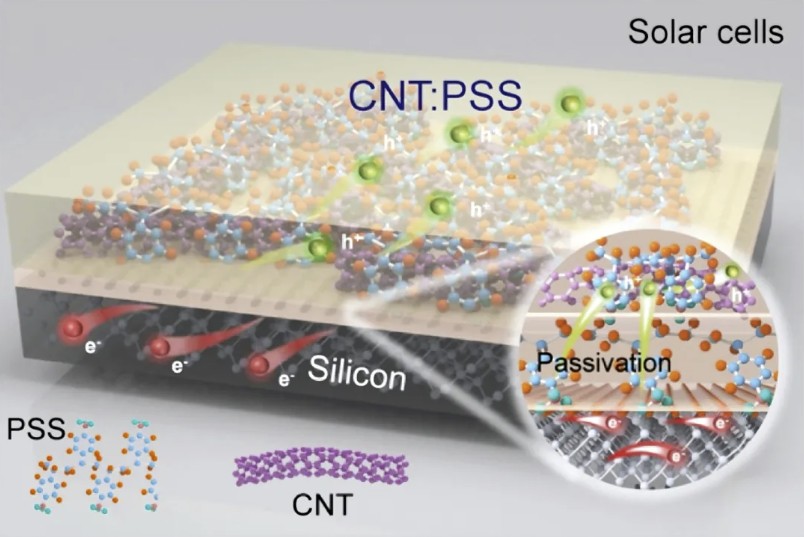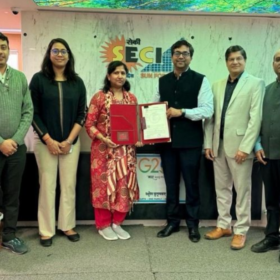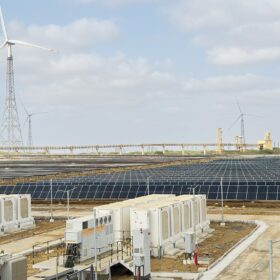China’s Hebei University and module manufacturer DAS Solar have jointly developed a silicon solar cell featuring a novel hole transport layer (HTL) designed to simplify production and reduce costs.
In this HTL, the researchers replaced the commonly used PEDOT with carbon nanotubes (CNT) combined with PSS. The resulting CNT:PSS composite functions effectively without heavy doping.
The new approach combines high conductivity with excellent interface passivation. Its work function of 5.63 eV exceeds that of conventional PEDOT:PSS (4.9–5.1 eV), enabling full-area contact passivation while integrating passivation and conduction in a single layer.
To address dispersion challenges of CNTs in solution, the team employed high-pressure blasting techniques and optimized carrier pathways through interface engineering.
One of the key advantages of the proposed cell architecture is its simplicity and cost-effectiveness. The CNT:PSS film can be solution-coated at room temperature, eliminating the need for high-temperature doping or vacuum processes. This reduces both thermal and equipment demands, resulting in significant cost savings.
Prototype devices based on the CNT:PSS/Si design have achieved efficiencies above 23.3%, representing a 15% improvement over PEDOT:PSS-based cells. Simulations suggest a theoretical efficiency ceiling of around 29%.
Details of the device were published in the paper “Efficient and Stable Hole-Transport Material for Solar Cells: From PEDOT:PSS to Carbon Nanotubes:PSS,” in ACS Energy Letters.
DAS Solar said that the CNT: PSS/Si HTL holds promise across multiple fronts: it can be integrated as a hole-transport/passivation layer in TOPCon and HJT structures to boost output and reduce complexity; it is well suited to be a top electrode in perovskite/silicon tandem stacks owing to its high work function and low-temperature processability; and its mechanical flexibility and over 95 % optical transparency make it a potential choice for flexible and building-integrated photovoltaics (BIPV) applications.
DAS Solar estimates that each gigawatt of production could save approximately CNY 25 million ($3.5 million), while single-cell production costs may fall by 25%.
This innovation stems from the DAS Solar–Hebei University Photovoltaic Innovation Research Center, established in January 2024. As part of the collaboration, Hebei University transferred a passivation liquid efficiency enhancement technology—valued at CNY 10 million—to DAS Solar.
This content is protected by copyright and may not be reused. If you want to cooperate with us and would like to reuse some of our content, please contact: editors@pv-magazine.com.








By submitting this form you agree to pv magazine using your data for the purposes of publishing your comment.
Your personal data will only be disclosed or otherwise transmitted to third parties for the purposes of spam filtering or if this is necessary for technical maintenance of the website. Any other transfer to third parties will not take place unless this is justified on the basis of applicable data protection regulations or if pv magazine is legally obliged to do so.
You may revoke this consent at any time with effect for the future, in which case your personal data will be deleted immediately. Otherwise, your data will be deleted if pv magazine has processed your request or the purpose of data storage is fulfilled.
Further information on data privacy can be found in our Data Protection Policy.